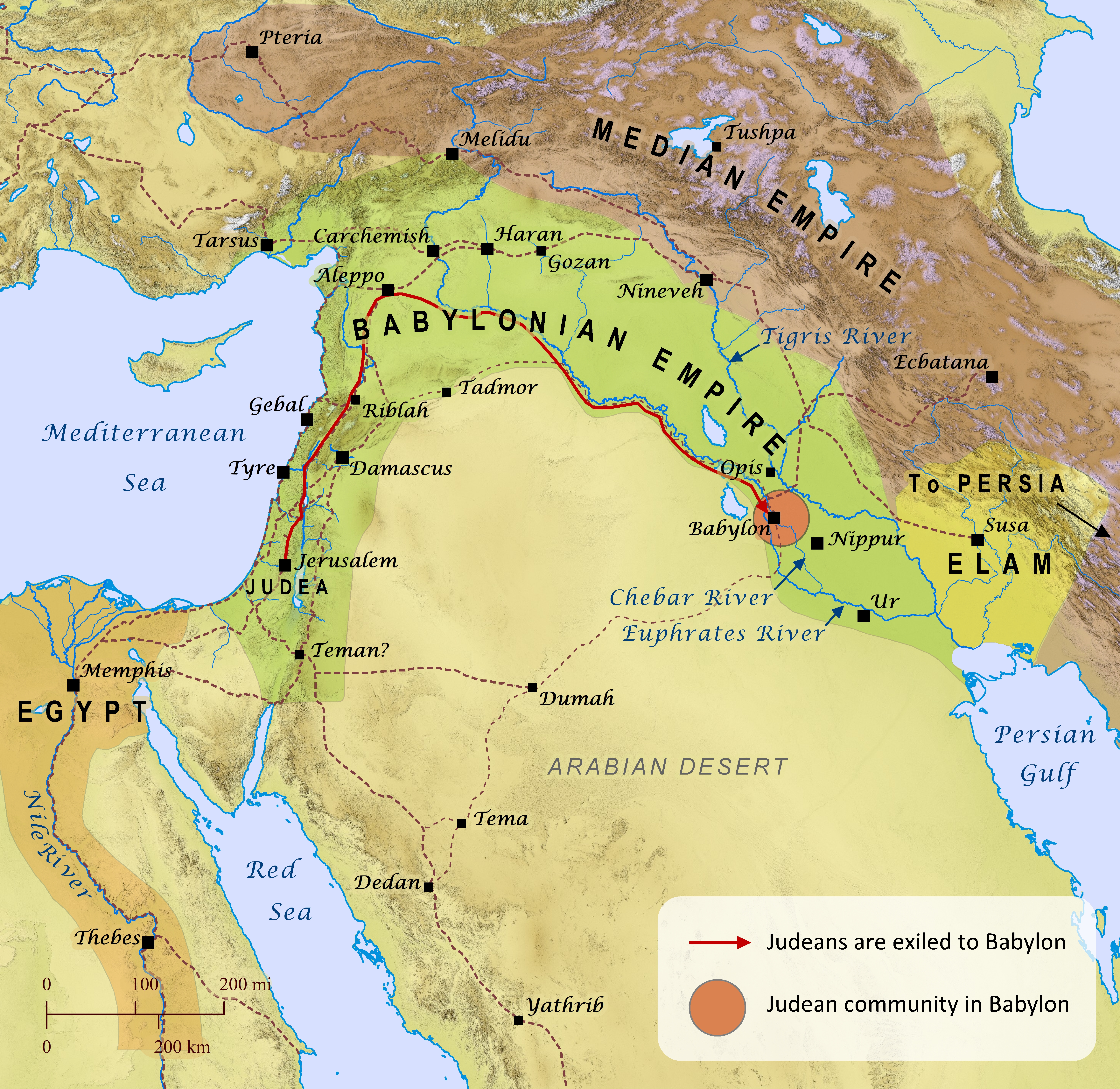Note: This view shows ‘verses’ which are not natural language units and hence sometimes only part of a sentence will be visible—click on any Bible version abbreviation down the left-hand side to see the verse in more of its context. Normally the OET discourages the reading of individual ‘verses’, but this view is only designed as a tool for doing comparisons of different translations—the older translations are further down the page (so you can read up from the bottom to trace the English translation history). The OET segments on this page are still very early looks into the unfinished texts of the Open English Translation of the Bible—please double-check these texts in advance before using in public.
OEB No OEB DAN book available
WEBBE In the third year of the reign of Jehoiakim king of Judah, Nebuchadnezzar king of Babylon came to Jerusalem and besieged it.
WMBB (Same as above)
NET In the third year of the reign of King Jehoiakim of Judah, King Nebuchadnezzar of Babylon advanced against Jerusalem and laid it under siege.
LSV In the third year of the reign of Jehoiakim king of Judah, Nebuchadnezzar king of Babylon has come to Jerusalem, and lays siege against it;
FBV During the third year of the reign of Jehoiakim, king of Judah, Nebuchadnezzar, king of Babylon, attacked Jerusalem and surrounded it.
T4T After King Jehoiakim had been ruling in Judah for almost three years, King Nebuchadnezzar of Babylon came to Jerusalem with his army and surrounded the city.
LEB In the third year of the reign of Jehoiakim king of Judah, Nebuchadnezzar the king of Babylon came to Jerusalem and besieged it.
BBE In the third year of the rule of Jehoiakim, king of Judah, Nebuchadnezzar, king of Babylon, came to Jerusalem, shutting it in with his forces.
Moff ln the third year of the reign of Jehoiakim king of Judah, Nebuchadnezzar king of Babylon went and besieged Jerusalem;
JPS IN THE third year of the reign of Jehoiakim king of Judah came Nebuchadnezzar king of Babylon unto Jerusalem, and besieged it.
ASV In the third year of the reign of Jehoiakim king of Judah came Nebuchadnezzar king of Babylon unto Jerusalem, and besieged it.
DRA In the third year of the reign of Joakim king of Juda, Nabuchodonosor king of Babylon came to Jerusalem, and besieged it.
YLT In the third year of the reign of Jehoiakim king of Judah, come hath Nebuchadnezzar king of Babylon to Jerusalem, and layeth siege against it;
Drby In the third year of the reign of Jehoiakim king of Judah came Nebuchadnezzar king of Babylon unto Jerusalem, and besieged it.
RV In the third year of the reign of Jehoiakim king of Judah came Nebuchadnezzar king of Babylon unto Jerusalem, and besieged it.
(In the third year of the reign of Jehoiakim king of Yudah came Nebuchadnezzar king of Babylon unto Yerusalem, and besieged it. )
SLT In the third year to the kingdom of Jehoiakim, king of Judah, came Nebuchadnezzar king of Babel to Jerusalem, and he will press it.
Wbstr In the third year of the reign of Jehoiakim king of Judah came Nebuchadnezzar king of Babylon to Jerusalem, and besieged it.
KJB-1769 In the third year of the reign of Jehoiakim king of Judah came Nebuchadnezzar king of Babylon unto Jerusalem, and besieged it.
(In the third year of the reign of Jehoiakim king of Yudah came Nebuchadnezzar king of Babylon unto Yerusalem, and besieged it. )
KJB-1611 ¶ In the thirde yere of the reigne of Iehoiakim King of Iudah, came Nebuchad-nezzar King of Babylon, vnto Ierusalem, and besieged it.
(Modernised spelling is same as from KJB-1769 above, apart from capitalisation and punctuation)
Bshps In the third yere of the raigne of Iehoachim king of Iuda, came Nabuchodonozor king of Babylon vnto Hierusalem, & besieged it.
(In the third year of the reign of Yehoachim king of Yuda, came Nabuchodonozor king of Babylon unto Yerusalem, and besieged it.)
Gnva In the thirde yeere of the reigne of Iehoiakim king of Iudah, came Nebuchad-nezzar King of Babel vnto Ierusalem and besieged it.
(In the third year of the reign of Yehoiakim king of Yudah, came Nebuchad-nezzar King of Babel unto Yerusalem and besieged it. )
Cvdl In ye thirde yeare of ye raigne of Ioachim kynge off Iuda, came Nabuchodonosor kynge of Babilon vnto Ierusalem, & beseged it:
(In ye/you_all third year of ye/you_all reign of Yoachim king off Yuda, came Nebuchadnezzar king of Babylon unto Yerusalem, and besieged it:)
Wycl In the thridde yeer of the rewme of Joachym, king of Juda, Nabugodonosor, the kyng of Babiloyne, cam to Jerusalem, and bisegide it.
(In the third year of the realm of Yoachym, king of Yuda, Nebuchadnezzar, the king of Babylon, came to Yerusalem, and besieged it.)
Luth Im dritten Jahr des Reichs Jojakims, des Königs Judas, kam Nebukadnezar, der König zu Babel, vor Jerusalem und belagerte sie.
(In_the third year the kingdom Yoyakims, the kings Yudas, came Nebukadnezar, the/of_the king to/for Babel, before/in_front_of Yerusalem and besieged they/she/them.)
ClVg Anno tertio regni Joakim regis Juda, venit Nabuchodonosor, rex Babylonis, in Jerusalem, et obsedit eam:
(In_the_year third of_the_kingdom Yoakim king Yuda, he_came Nabuchodonosor, king Babylonis, in/into/on Yerusalem, and obsedit her: )
RP-GNT No RP-GNT DAN book available
